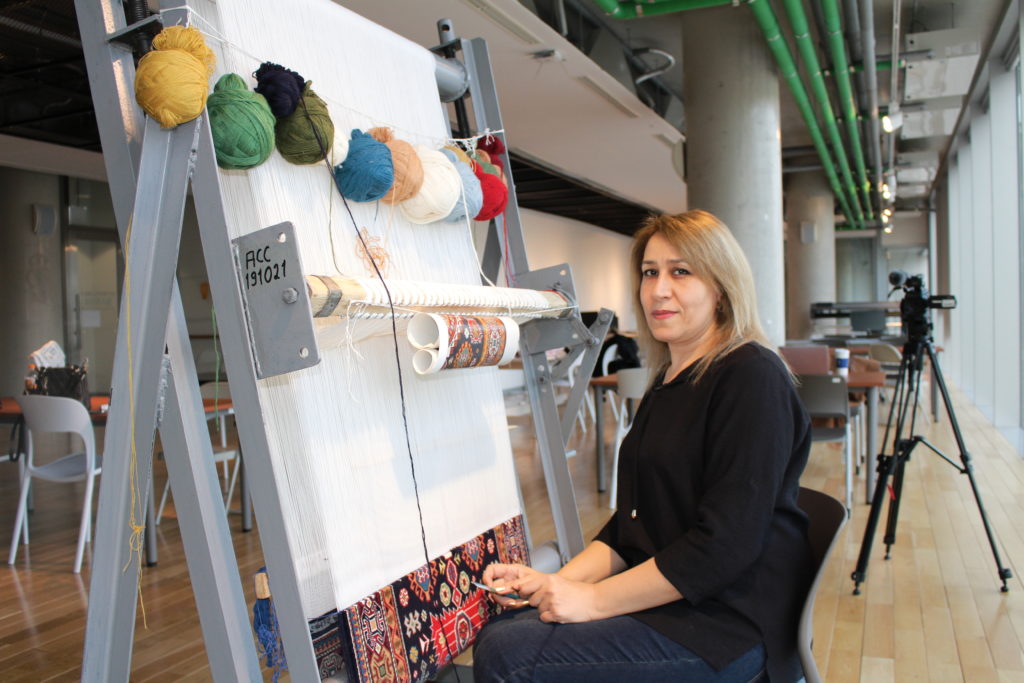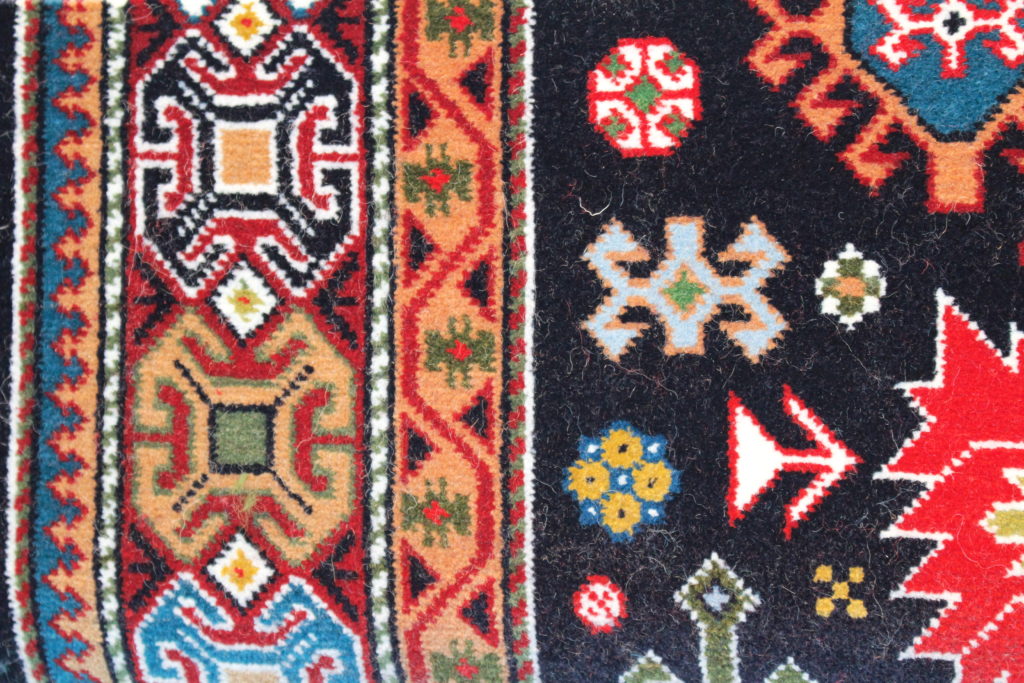Azerbaijani Carpet Artistry: An Interview with Lale Alieva
Written by Cami Ismanova.
Azerbaijan is a gorgeous country in the south Caucasus region of Eurasia. Baku, the capital, is known for being a city where the East and West intersect. Carpet artist Lale Alieva comes from this amazingly hospitable country. Mrs. Alieva began to weave carpets (halcha) when she was fifteen years old. Since her early teen years, Alieva has been very interested in art, and it made her incredibly proud to think that one day she might share her culture with others. Alieva is a representative of the Azerbaijan National Carpet Museum, and it has been more than thirty years since she began weaving beautiful Azerbaijani carpets.

Alieva inherited her carpet-weaving talent from older women in her family. They taught her how to weave and how to master her skills. She believes that innate talent and hard work result in high-quality products, and after completing each and every one of her carpets, she feels immense pleasure. After all, very carpet has its own story. Alieva gets her inspiration from the artworks of her favorite artist, Eldar Mikailzade. “His carpets are like a path to Wonderland,” she said with a warm smile. In this feature, we were fortunate enough to interview Alieva about her incredible works of art.
Gwangju News (GN): Could you tell us more about the project you are participating in at the Asia Culture Center (ACC)?
Lale Alieva: I have the honor to participate in the ACC’s Cultural Product Program. First, the ACC approached the Embassy of the Republic of Azerbaijan to the Republic of Korea in Baku. Then, I was chosen as a candidate to represent my culture and the Azerbaijan National Carpet Museum here in Gwangju. The project itself is about inviting artists from different parts of the globe and letting them share the traditional arts of their nation.
GN: The Azerbaijan National Carpet Museum held exhibitions in more than thirty countries including Germany, France, and the Netherlands. What do you think is the key to such an interest from the international community?
Lale Alieva: It all goes back to our history, starting from the agriculture of ancient times, when our ancestors washed and dried wool. Then they used fruits and herbs to color the wool organically. Natural fabric and natural coloring is the trademark of high-quality Azerbajaini carpets even nowadays. Also, it is important to remember that the techniques of weaving the carpet were handed down from generation to generation. The Silk Road contributed a lot to spreading our national carpets, of course. Merchants that came to our lands were amazed by the beauty of our carpets. So they bought them either to take back home or to sell in some other countries. This trade made Azerbaijani carpets popular abroad at that time. We try to preserve our national art these days as well by participating in various exhibitions.

GN: Could you briefly tell our readers about the process of weaving Azerbaijani carpets?
Lale Alieva: Once all of the necessary materials are ready, such as woolen threads and iron flooring purposefully mastered for making a carpet, an artist gets a pattern for the carpet from a designer. Then the work begins. Usually, it takes around two months to complete an average-sized carpet. Of course, time might vary depending on the size and the complexity of the designs. Designers create design samples based on ancient designs. They can add some modern abstract designs to the original ones. These days we use the service of the designers, but in the past, artists used their surroundings and imagination to create unique designs. It could be a garden full of flowers, animals in the wild, or just people from their communities sitting and chatting. Whatever artists could see in front of them could become art!
GN: Are there any national customs or traditions related to making or purchasing carpets?
Lale Alieva: In the past, there was always at least one carpet in each home. It demonstrates how essential and natural it was to have a carpet. Brides usually would weave their own carpets, and people could judge her personality by the way her carpet looked. If it was beautiful, then a bride had inner beauty. During weddings, family and friends threw sweets on the carpet of the bride to wish her happiness and success in marriage. Also, Azerbaijani carpets were used in our culture to measure the wealth of the family. The more carpets you had, the wealthier you were.

GN: Do you think it is important to cultivate and integrate art into education in our contemporary world of technology?
Lale Alieva: I strongly believe that technology makes the whole process of weaving carpets easier. Of course, we stick to using organic products, but technology contributes to the improvement of techniques and the creation of new designs. I believe that technology and the internet are quite useful in preserving and promoting national art. It is the era of information. In Azerbaijan, many educational centers provide courses where young people can easily learn carpet weaving. I can tell that their interest is rising year by year, for carpet weaving is a part of history.
GN: Did you have a chance to find any similarities between Azerbaijani and Korean culture while staying in Gwangju?
Lale Alieva: Yes, of course! We all share common human values despite our different cultures, and I would say the most prominent one is hospitality. Azerbaijani culture is known for its hospitality, and I am pleasantly surprised by how friendly and hospitable Korean people are. In addition, both cultures cultivate respect for the elderly. There are many such similarities.

GN: Well, Alieva, thank you for this wealth of information about Azerbaijani carpet artistry and for making time for this interview.
Alieva is an extremely talented artist, yet so modest. During our interview, she contributed to the creation of a warm, friendly atmosphere. The interview with her was so inspiring and informative. If you, the readers, had been there with her, you would have fallen in love with Azerbaijani art, culture, and people like I did. Alieva will stay in Gwangju until December 11. She will present as a gift one of her carpets to the ACC. Thanks to her generosity, we, the people of Gwangju, will be able to go and see Azerbaijani art any time we like.
For all inquiries about the upcoming exhibition, check the ACC’s website.
The Author
Cami Ismanova is a student at Chonnam National University majoring in economics. She writes poems both in English and Russian as one of the ways to express herself. She loves traveling around and reading classics.







